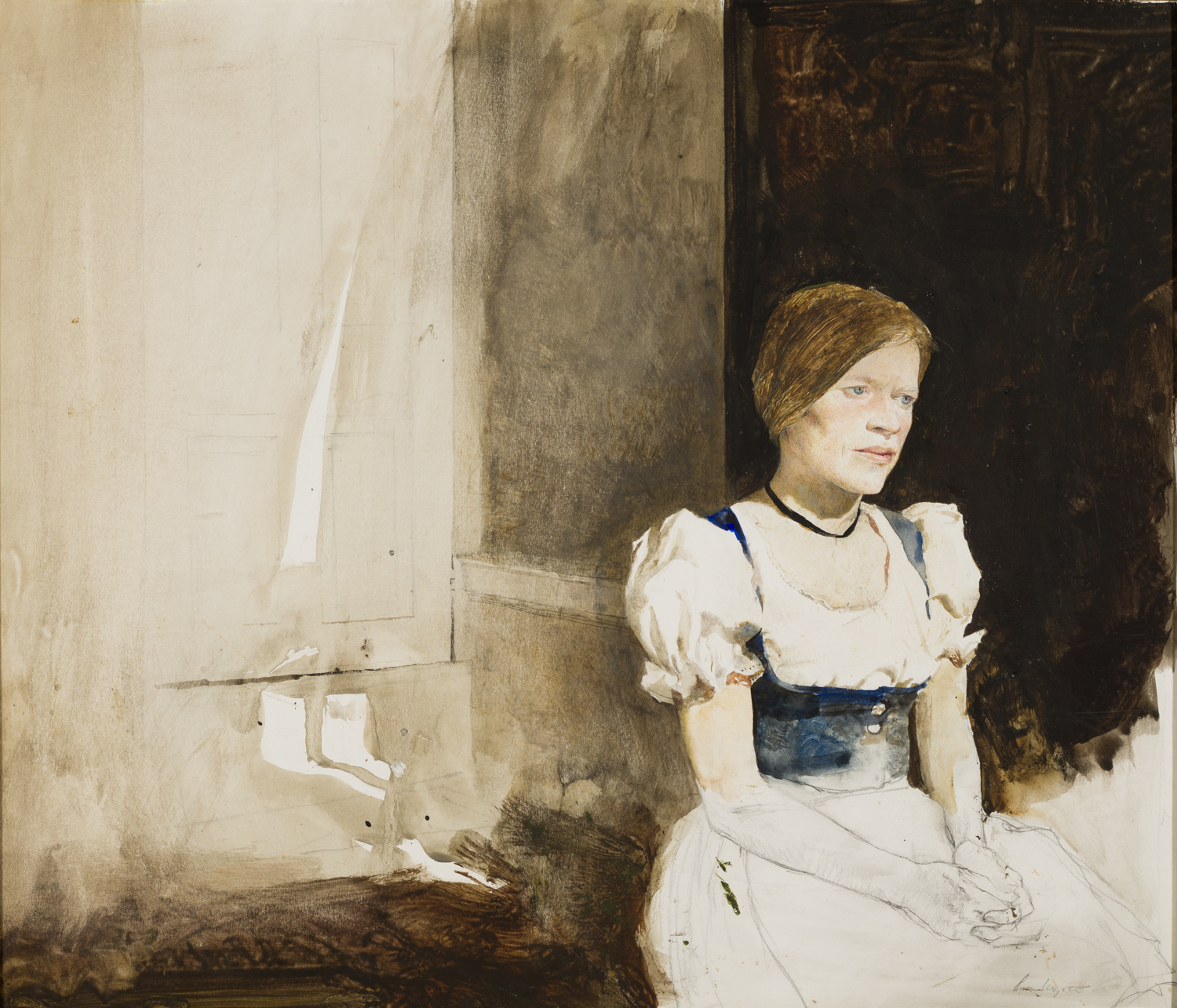Andrew Wyeth
Andrew Wyeth is an enigmatic watercolorist and egg tempera painter who was born into an artistic family in Chadds Ford, Pennsylvania in 1917. His father was the prolific and successful artist N.C. Wyeth (1882 -1945), who painted and illustrated for books and magazines. Wyeth’s father was the only instructor he had, providing him with a comprehensive and strict arts apprenticeship in his studio. Wyeth was trained to draw from life and quickly became an accomplished draughtsman. He first exhibited his watercolors in 1932 at the Art Alliance of Philadelphia. His second show took place in 1937 at the Macbeth Gallery, which was his first solo exhibition and was an immediate success.
Over the course of his six decade career, Wyeth produced a large body of personal work that records his astute observations about the natural world and his immediate environment. His paintings are almost entirely drawn from two isolated locations: the Brandywine Valley, near Chadds Ford, and from his summer home located in Cushing, Maine. Wyeth famously depicted dilapidated farmhouses of Chadds Ford, rural landscapes, closely observed portraits, and interior still lifes. Meticulous details done in the exacting mediums of egg tempera and watercolor invite close observation of Wyeth’s scenes. While his paintings are realistic renderings, he imbues them with subjective emotion in his use of subdued color, dramatic light, and unusual angles.
From 1971 to 1985, Wyeth secretly created hundreds of drawings and paintings of his German neighbor in Chadds Ford, Helga Testorf. Known as “The Helga Pictures,” the series presents the subject in a variety of poses, costumes, and even nudes. The progression of portraits show the intimacy between artist and muse, developed over the course of fifteen years. When the pictures were revealed in 1986, they caused a sensation in the art world and beyond; never before in the history of American art had an artist captured one singular subject for so many years. That year, Pennsylvania collector Leonard E.B. Andrews purchased nearly the entire series of Helga pictures. The works were later exhibited at numerous institutions including The National Gallery of Art, and the Los Angeles County Museum of Art.
The present work, Peasant Dress, is an early work among the series, painted in 1972. The composition depicts a modest, seated Helga in a three-quarter view. Helga sits within a rustic interior in the far right corner of the composition, leaving the majority of the scene spare. A bright, natural light from an unknown source reflects off her pale skin and dress. She sits demurely with her hands clasped at her lap, and stares pensively into the distance. Helga wears a peasant-style dress, with a tight blue bodice and billowing white sleeves. Her characteristic, long strawberry-blond hair is pulled back at the nape of her neck, which is adorned with a close-fitting black velvet ribbon. Helga wears the ribbon in several provocative nude compositions, drawing comparison to its symbolic use throughout art history.
While he was already a celebrated painter when the Helga paintings were revealed, the intimate group of works cast Wyeth onto a larger stage and further established his icon status. Peasant Dress is a deeply personal exploration of the artist’s relationship with his muse. Wyeth himself explained, “The heart of the Helga series is that I was trying to unlock my emotions in capturing her essence, in getting her humanity down” (Andrew Wyeth: Helga on Paper, New York, 2006, p. 15).
Andrew Wyeth
Peasant Dress, 1972
Watercolor and pencil
19 7/8″ x 29 3/4″
Signed, lower right
Provenance
Leonard E.B. Andrews, Malvern, Pennsylvania, 1986, acquired directly from the artist
Japanese Collection, 1989, acquired from the above
Mary Anne and Eugene A. Gargaro, Jr. Collection, Grosse Pointe Shores, Michigan, acquired through Sotheby’s Private Sale in 2006

